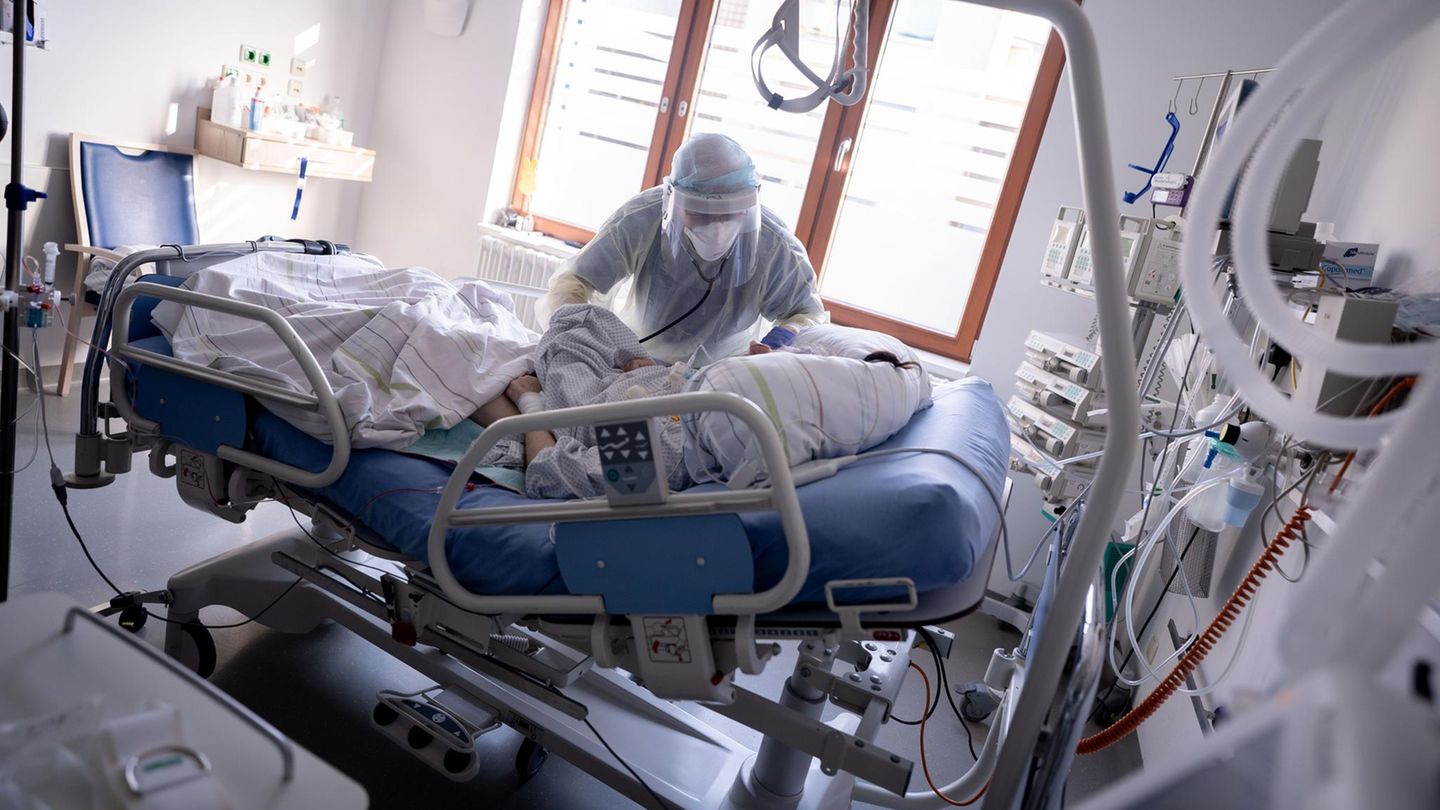The hospitalization incidence replaces the seven-day incidence as the most important parameter in the pandemic. But the value reported by the Robert Koch Institute on a daily basis is clearly too low, according to media reports.
Does the value increase, stagnate or decrease? For a long time, the so-called seven-day incidence was the important factor in assessing the infection rate in Germany. It was calculated from the number of new infections reported per 100,000 inhabitants within seven days. However, as the vaccination rate increased, the incidence became less meaningful. People who are vaccinated have a much lower risk of severe disease. The result: The number of seriously ill Covid-19 patients who are dependent on hospital treatment is lower than with comparable incidences in the past year.
In the future, all eyes should therefore be on the hospitalization rate – this was what the Bundestag had in a new version of the Infection Protection Act.If this value climbs above a critical threshold – which is individually set by the federal states – regionally stricter measures could take effect again from now on. This is to prevent the clinics from being overloaded.
The text of the law says: The main benchmark for further protective measures should be “the number of people admitted to hospital in relation to Coronavirus disease-2019 (COVID-19) per 100,000 inhabitants within seven days”. Covid-19 patients who come to a normal ward, but also those who are subject to intensive care, are recorded.
Criticism of Rechenweg
The amendment to the Infection Protection Act, which also includes other innovations, is due to come into force on Wednesday. The new hospitalization rate is causing criticism, more precisely: the way in which it is calculated. As reported by the news magazine “”, among others, the hospitalization rate reported by the Robert Koch Institute (RKI) is “misleading”. It is “far too low”. A research by the “” comes to a similar conclusion: The burden on the clinics is “systematically and clearly underestimated”. How can that be?
The RKI shows the nationwide hospitalization rate in its daily reports from Monday to Friday. For today’s Wednesday, the value The rate is per se significantly lower than the previously usual seven-day incidence, which is currently given as 77.9. That is to be expected and also not the reason for the criticism, after all, not all Covid patients develop severe courses that have to be treated in a clinic.
In fact, the value does not refer to the number of Covid-19 patients per 100,000 inhabitants who were admitted to a hospital in the past seven days – which, if one reads the wording in the legal text, could certainly be assumed. Instead, the RKI uses a different calculation: “The 7-day incidence for hospitalizations is the number of cases reported as hospitalized over 7 days, divided by the number of inhabitants and converted to 100,000 inhabitants. The period relates to the reporting date, i.e. the day on which the health department recorded the case electronically, “said the RKI at the request of the stern with.
This means: The current clinic incidence takes into account corona patients who have been reported positive to a health department over a period of seven days and were admitted to a clinic. Patients who become seriously ill more than seven days after submitting the notification to the health department and who have to go to a clinic are not recorded in the daily clinic incidence. The accusation: The current values do not reflect the realistic events in the clinics. You underestimate it.
The proportion of patients who initially drop out of the statistics should not be negligible. Corona disease often begins mildly at first and worsens in the following days. The RKI itself points out that an infection “usually in the second week of illness” can develop into pneumonia. One says that corona patients “are often not hospitalized until one to two weeks after diagnosis”.
The calculation based on the reporting date is not incorrect. However, reliable data is only available for previous weeks if late registrations are also taken into account. A comparison of the daily updated incidence with the incidence that also takes late registrations into account shows that the discrepancy is sometimes large. On August 23, the RKI initially reported a clinic rate of 1.28 cases per 100,000 inhabitants within seven days. This value was retrospectively – and is thus almost twice as high.
Curve could be misinterpreted
There is also another problem on the RKI’s trend dashboard, which shows the clinic incidence with late registrations. The incidence curve, as late registrations are still missing for the most recent days. The affected area is highlighted in gray on the dashboard. The downward curve could give the impression that the clinic incidence was falling, although it rose steadily in the preceding weeks when the late registrations are complete.
The RKI is well aware of the weaknesses. The delay in reporting was “not surprising”, shared the RKI stern-Inquiry with. There is a visual indication and an explanation for the trends. It says: “The last 14 days are highlighted in gray because the values can be underestimated to a certain extent due to delayed transmission.”
Why is the clinic incidence not simply calculated on the basis of the daily reported Covid-19 hospitalizations? The data should be available because hospitals have been obliged to report all admissions of Covid-19 patients since July 13. The RKI also publishes the value in its daily management reports. The plus compared to the previous day is today, Wednesday, at 628 cases.
But apparently the data are causing problems. At the request of the stern informed the RKI that the reporting date to the health authorities was available for each reported case, other than the hospitalization date. The RKI did not respond to the question of what measures, if any, were planned to make the number of clinic incidences more meaningful.
SPD health expert Karl Lauterbach expressed his incomprehension about the calculation of the clinic incidence on Twitter: “The extremely important hospitalization rate is systematically calculated too low due to calculation errors and always reports a relative decline for the last few days due to a data error.” The RKI has to change this, the problem has been known for weeks, according to Lauterbach.
In all likelihood, this will not remain the only clinical incidence challenge. It is the task of the federal states to set their own limit values depending on the regional hospital capacities. However, in many places there are currently no clearly defined thresholds from which stricter measures could take effect again.




